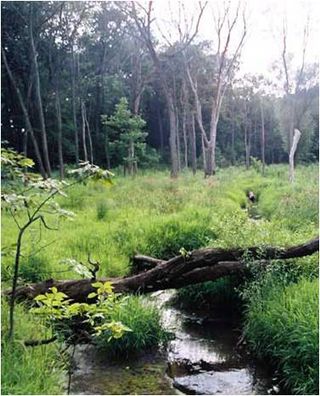
Let Nature Fill in the Details (Op-Ed)

David Festa, vice president of the Land, Water, Wildlife Program at the Environmental Defense Fund, contributed this article to LiveScience's Expert Voices: Op-Ed & Insights.
I recently was struck by a line in an article in the new issue of Scientific American. It called the loss of Louisiana's coastal wetlands "the greatest environmental, economic and cultural tragedy on the North American continent."
It's easy to see why they would say that. Since the 1930s, efforts to control the Mississippi River and widespread energy development in the Mississippi delta have resulted in the sacrifice of 1,900 square miles of Louisiana's coastal wetlands to the sea. If that had happened on the east coast, an area twice the size of Boston, New York City, Philadelphia and Washington, D.C. put together would be under water. Of course, the engineering projects on the Mississippi spurred over a century of economic development and navigation. But the cost has been the loss of the original delta ecosystem, leaving coastal communities more exposed to storm surges and a rising sea level.
As dramatic as that is, the thing that caught my eye even more was another line in the article: "Many wetland recovery programs have failed by trying to re-create the original ecosystems."
The article goes on to make a point that we don't have to re-create the past to make things better for people and the planet. In fact, when you think clearly and specifically about the need we as a society are trying to meet, and then ask how nature can help meet that need, surprisingly positive things can happen.
Consider the article's example of the Delaware Bay, an ecosystem that was teeming with aquatic life before settlers built dikes and drained thousands of acres to grow crops.
"Looming on the New Jersey shore of the bay is the Salem nuclear power plant, owned by utility giant PSEG," the article states. "The plant sucks in billions of gallons of water a day for cooling and kills millions of tiny fish and other creatures as they get drawn through the intake valves. In the early 1990s state regulators asked PSEG to build cooling towers to end the carnage. Reluctant to spend $1 billion to $2 billion, the utility proposed an alternative: restore enough salt marsh to compensate for the loss of fish — more than 10,000 acres."
Sign up for the Live Science daily newsletter now
Get the world’s most fascinating discoveries delivered straight to your inbox.
The restoration team decided to take a less-is-more approach — cut gaps in the dikes that would let just the right amount of water into the marsh to create an initial maze of tidal creeks, and then let the rest of the creeks develop on their own. "If you engineer a drainage system in great detail, the system is forced to go the way you think it ought to be," a restoration expert told the publication. "But if you allow it to develop itself, it's more likely to be stable."

Today, reports Scientific American, the increase in fish populations more than makes up for the losses from the power plant's water intake, and the restoration looks like the natural marshes next door. Plus, it saved consumers money because letting nature meet the need cost hundreds of millions of dollars less than the concrete cooling towers.
Reversing damage
You see this principle at work in the efforts of EDF and our allies in the Gulf of Mexico. Last year, as part of ongoing efforts to reverse losses in the Mississippi River Delta, Louisiana passed the Comprehensive Master Plan for a Sustainable Coast. This landmark plan serves as the blueprint for restoring Louisiana's wetlands, and it follows two tenets that proved so successful in the Delaware Bay. First, it focuses on a single goal: rebuilding and sustaining hundreds of square miles of land. Secondly, it relies on nature to do the bulk of the reconstruction. Sediment-laden water from the Mississippi River will be diverted into marshes and shores. Over time, the sediment will create new land and a more resilient coastline.
In the face of extreme weather and global sea-level rise, this new approach takes on great meaning. Superstorm Sandy provided powerful illustrations of how wetlands can serve as a first line of defense against extreme weather events. Salt marsh remnants along Long Island's Jamaica Bay, for example, helped to protect residents there, while the lack of wetlands around Manhattan left it exposed to crashing waves.
More than 3 billion souls — 40 percent of the world's population — live as close to the sea as New Orleans. By letting nature back into the game, people can help rebuild coastal Louisiana and turn "a North American tragedy" into a model of success for protecting nearly half the planet's population.
The views expressed are those of the author and do not necessarily reflect the views of the publisher. This version of the article was originally published on LiveScience.
